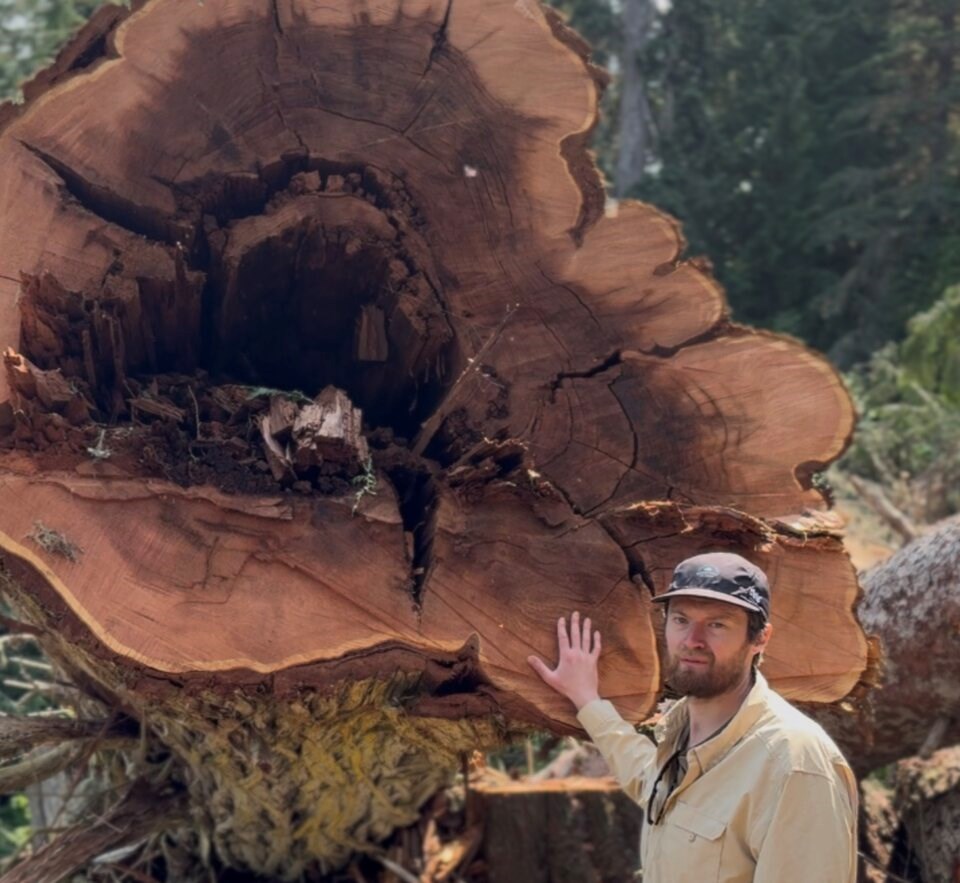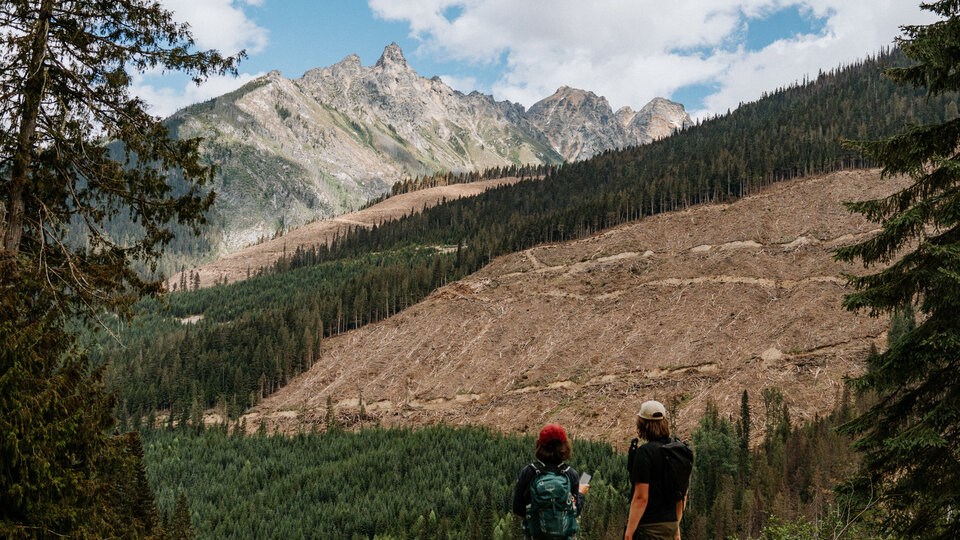Thousands of hectares of old-growth forest — critical habitat for British Columbia's endangered southern mountain caribou — are currently slated for logging or have already been approved, according to a new report.
Research released Wednesday by three conservation groups — Stand.earth, Wilderness Committee and Wildsight — used a satellite monitoring tool to identify 5,713 hectares of forest proposed and approved for logging across the ranges of three of the most at-risk herds: Columbia North, Groundhog and Wells Gray South.
That's an area equivalent to about 14 Stanley Parks, said Eddie Petryshen, a conservation specialist at Wildsight.
“It means the future extinction risk of these caribou herds is being decided today with those decisions on pending and approved cutting permits,” said Petryshen.
“You log and disturb more and more of their habitat, you increase the extinction risk for these caribou.”
He pointed to science going back decades that shows road building and logging removes attracts deer and moose as shrubs come up in the absence of trees. In turn, predators like wolves arrive with few barriers standing in the way of them and endangered caribou.
Study relied on satellite data, government documents
The analysis used a satellite tracking system, known as Forest Eye, built in 2023 with the help of the satellite firm Planet Labs. The Stand.earth tool systematically tracks forest cover change across the province.
Workers manually verify alerts flagged by the system to ensure forest cover loss occurred due to logging activity. The satellite imagery was then layered on top of maps showing core caribou habitat and pending and active cut blocks.
The three herds — which are thought to be the most viable within the mountain caribou's southern range — were found to have 58 per cent of their habitat at risk of logging. The Columbia North herd's habitat was found to face the highest risk of logging at 76 per cent.
“Columbia North, in particular here in the Kooteney and Columbia region, is kind of our last shot at having caribou in this region for the long term,” Petryshen said.
Ministry 'unable to comment' on report's findings
An unattributed statement from the Ministry of Forests said logging and road-building plans in caribou habitat rely on a number of experts — including foresters, geotechnical engineers, hydrologists and biologists — to manage impacts on caribou.
“We are unable to comment” on the more than 5,700 hectares of core caribou habitat the report flagged as slated for logging “as we don’t know how it was determined,” the ministry statement said.
A separate unattributed statement from the Ministry of Water Lands and Resource Stewardship noted B.C. has implemented predator reduction, material penning, and habitat protection in all three caribou herds targeted in the conservation groups’ analysis.
The ministry said the province's Caribou Recovery Program, which launched in 2020, was currently in the external engagement phase, meaning “the program and First Nations are engaging with tenure holders and interest groups.”
“The goal of this process is to identify effective habitat protection and management thresholds that will support recovery of the caribou herds,” the ministry said.
The Columbia North, Groundhog and Wells Gray South herds are part of that process, alongside six other herds, the statement added.
Claims over pending logging come amid BCTS pause
Of the nearly 2.2 million hectares of total habitat area, about 41 per cent is already considered disturbed from activities like clearcut logging, mining, hydro power projects and resource roads. That’s above a 35 per cent habitat disturbance threshold the Ottawa considers acceptable under the species’ federal recovery strategy.
The latest analysis comes shortly after BIV reported BC Timber Sales halting “new investments” in unprotected core caribou habitat of the Columbia North herd. At the time, the Ministry of Forests said the logging pause was part of a collaboration with First Nations, industry, as well as local and federal governments.
The goal, according to the ministry, is to “refine our knowledge, align shared priorities that support caribou and other objectives like mitigating wildfire risk and responsibly securing timber supply to support the economy.”
The ministry failed to answer several questions, including how much forest the logging pause will impact, how long it will last, and how it foresees the pause will impact caribou and the forestry industry. It also failed to clarify whether the province would be rolling out logging pauses in other parts of the province.
“I think it's a bold move by BCTS, and it's something other licensees should consider — because right now, we're not seeing the leadership of the province and the federal government on this file around caribou,” said Petryshen.

The pause in new developments does not include existing logging approvals. Earlier this month, Petryshen said he came across an ancient forest cutblock north of Revelstoke, B.C., in the heart of the Columbia North herd's core critical habitat. Less than a kilometre away, he said he found caribou scat.
“Just heartbreaking sort of scene when you when you have been working to try to recover these caribou,” he said
Signs of recovery overshadowed by long-term habitat decline
B.C.’s caribou populations have seen a 51 per cent decline since 1991. Ten herds are now considered either locally extinct or functionally extirpated, according to B.C. government data.
The latest surveys suggest recovery actions — including maternal penning and predator reduction — have helped to reverse that trend, and have already saved the lives of an estimated 1,500 animals across the province.
The Columbia North herd has grown in recent years — from 147 individuals in 2017 to 209 individuals in 2023.
But those represent modest gains at a time the herd’s core critical habitat keeps shrinking, say biologists.
Despite government recovery efforts and requirements listed under Canada's Species at Risk Act, caribou sub-populations lost twice as much habitat as they gained between 2000 and 2012, found one 2020 study.
“Despite this high level of existing disturbance, the B.C. government continues to approve new logging permits,” the conservation groups' analysis concludes.
The report also criticized the province for failing to implement recommendations under the Old Growth Strategic Review, including putting high-risk old-growth forests off-limits to logging
It also challenged the government to direct office staff to withhold approvals for new logging and road construction in critically endangered caribou habitat.



